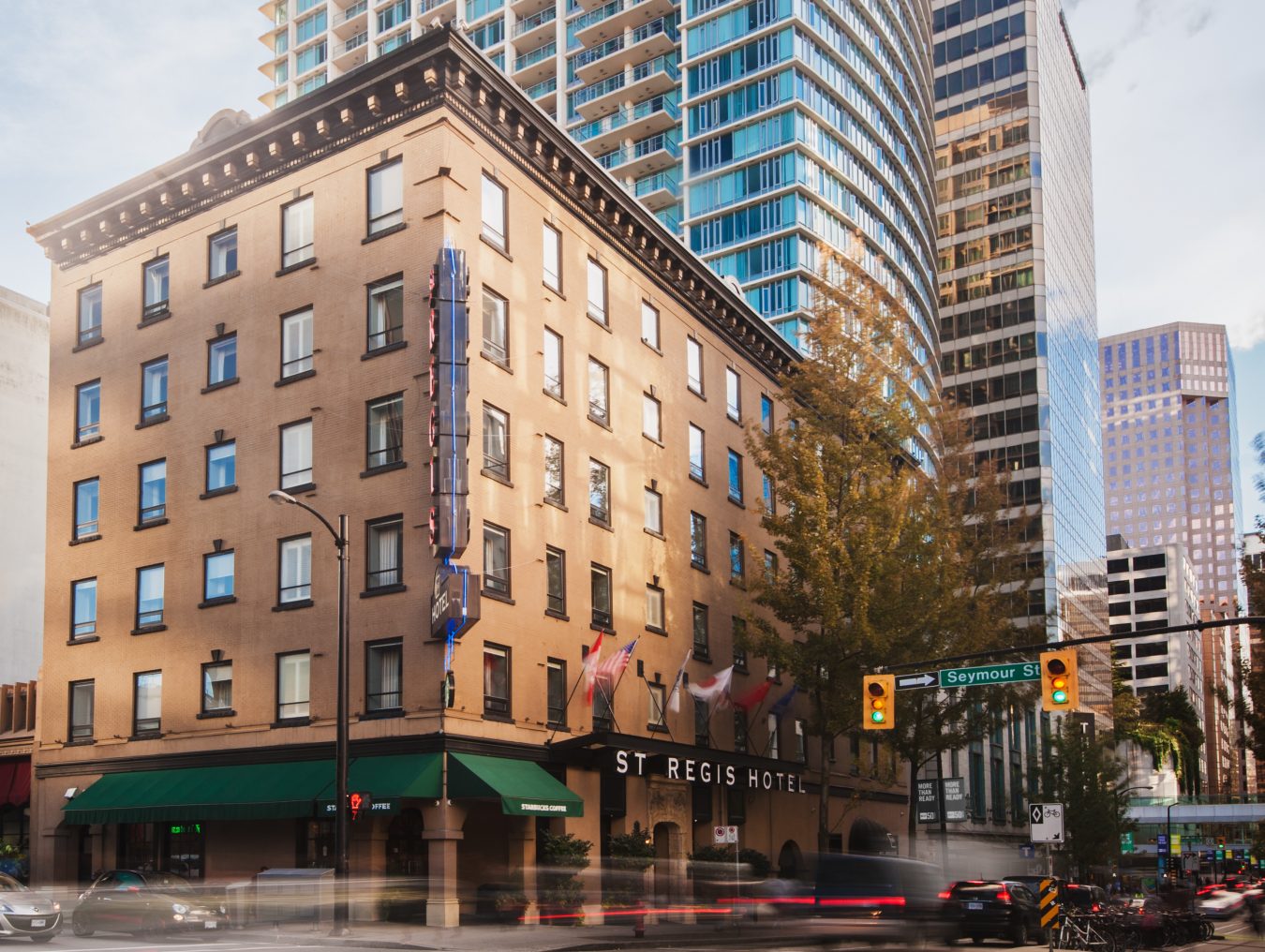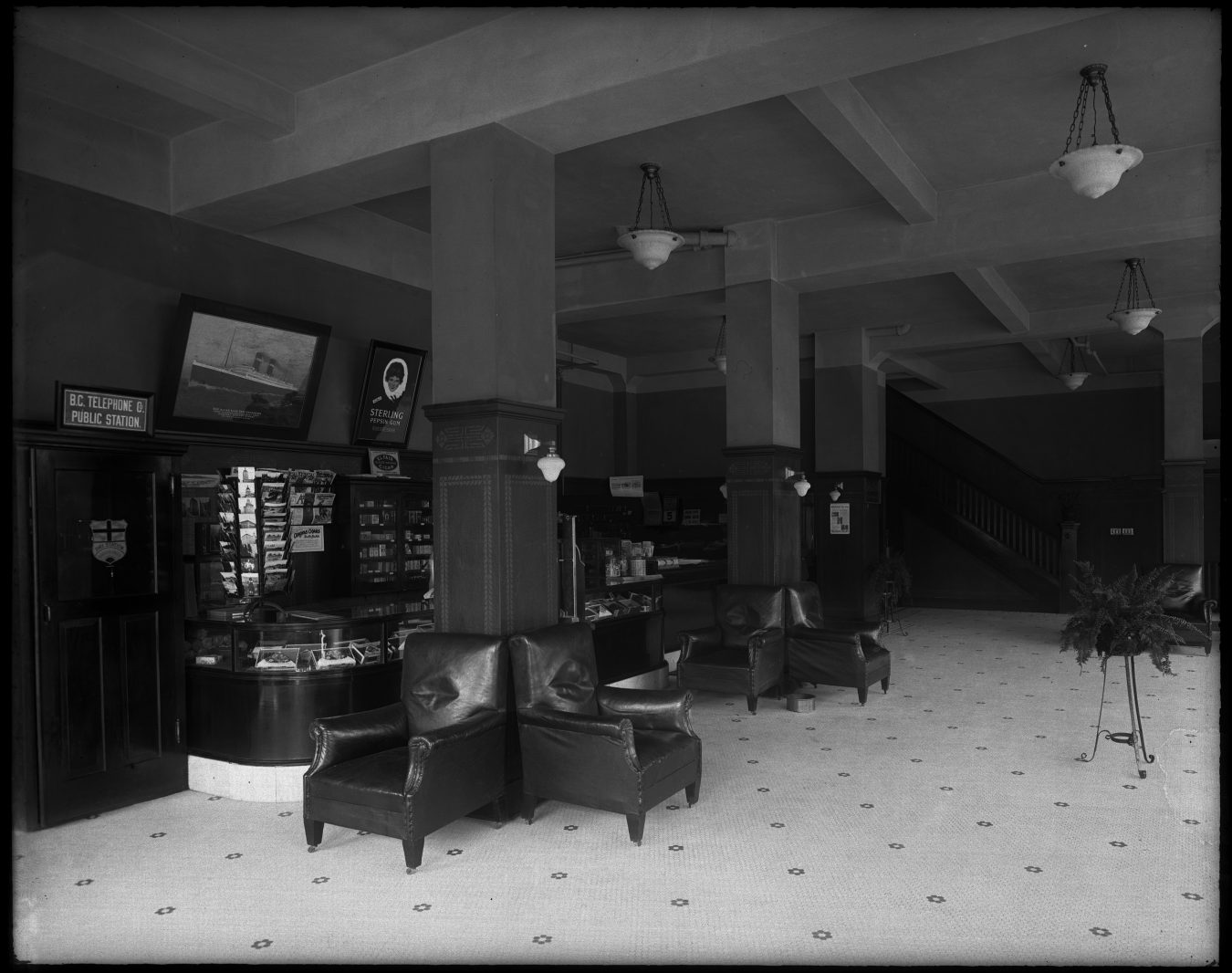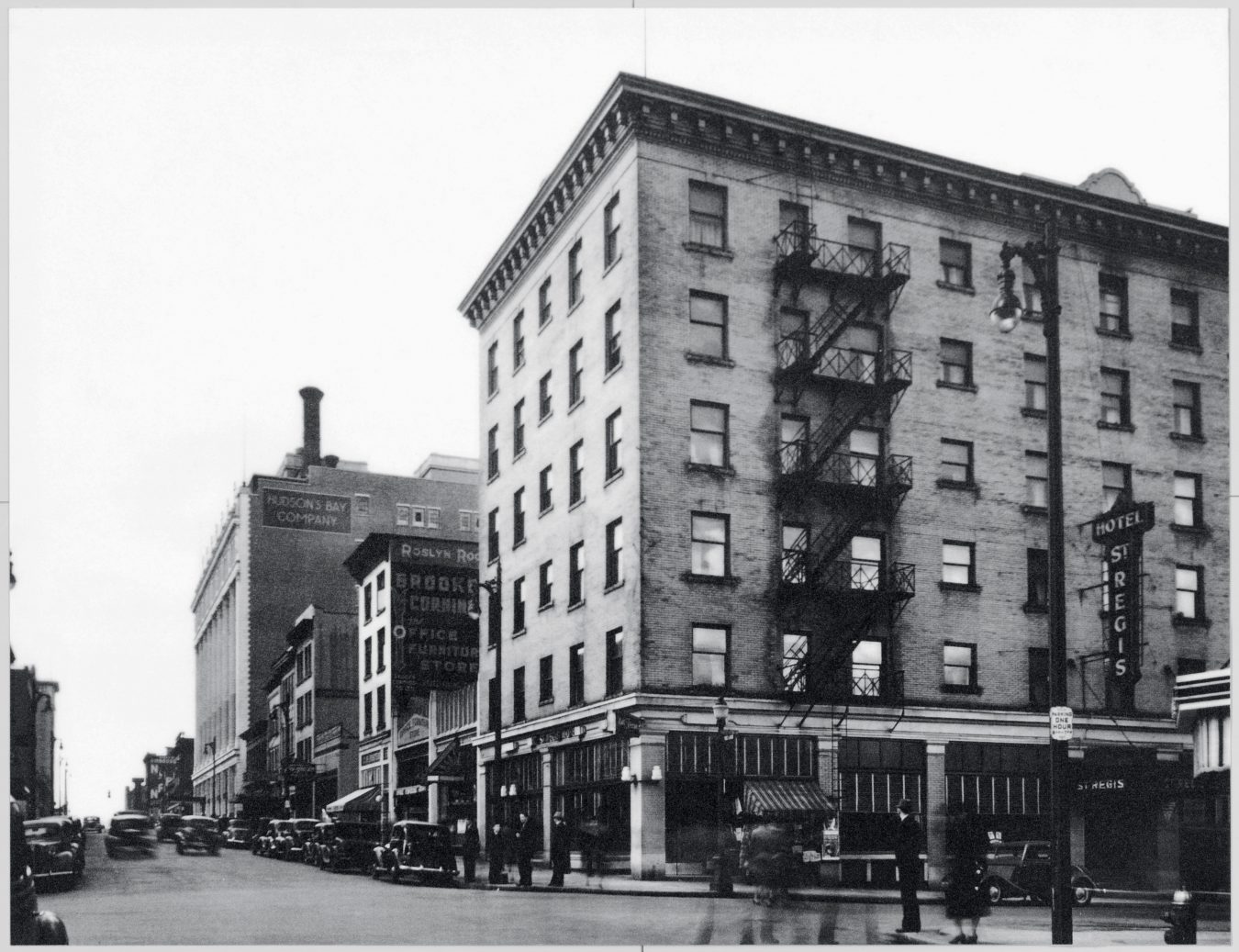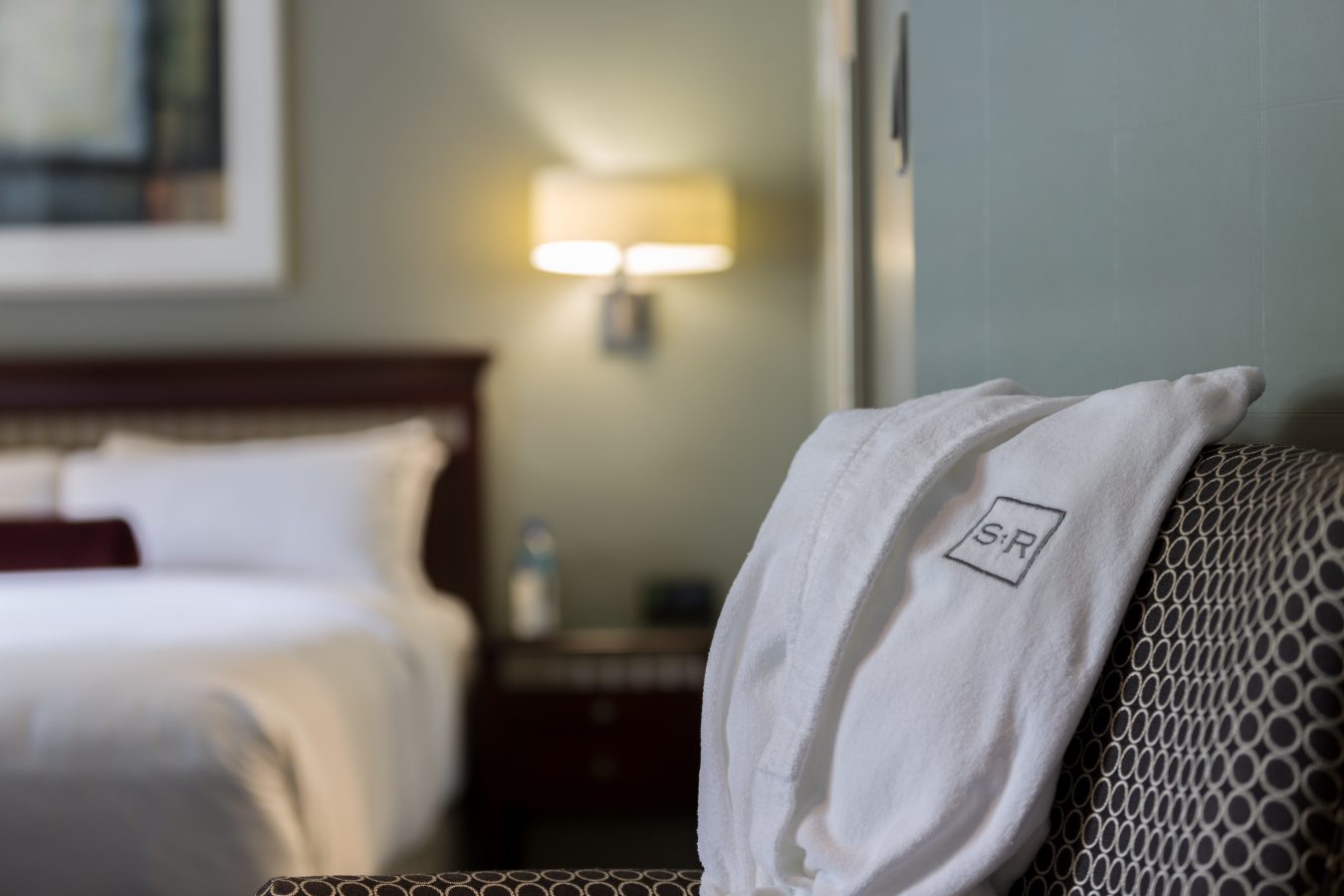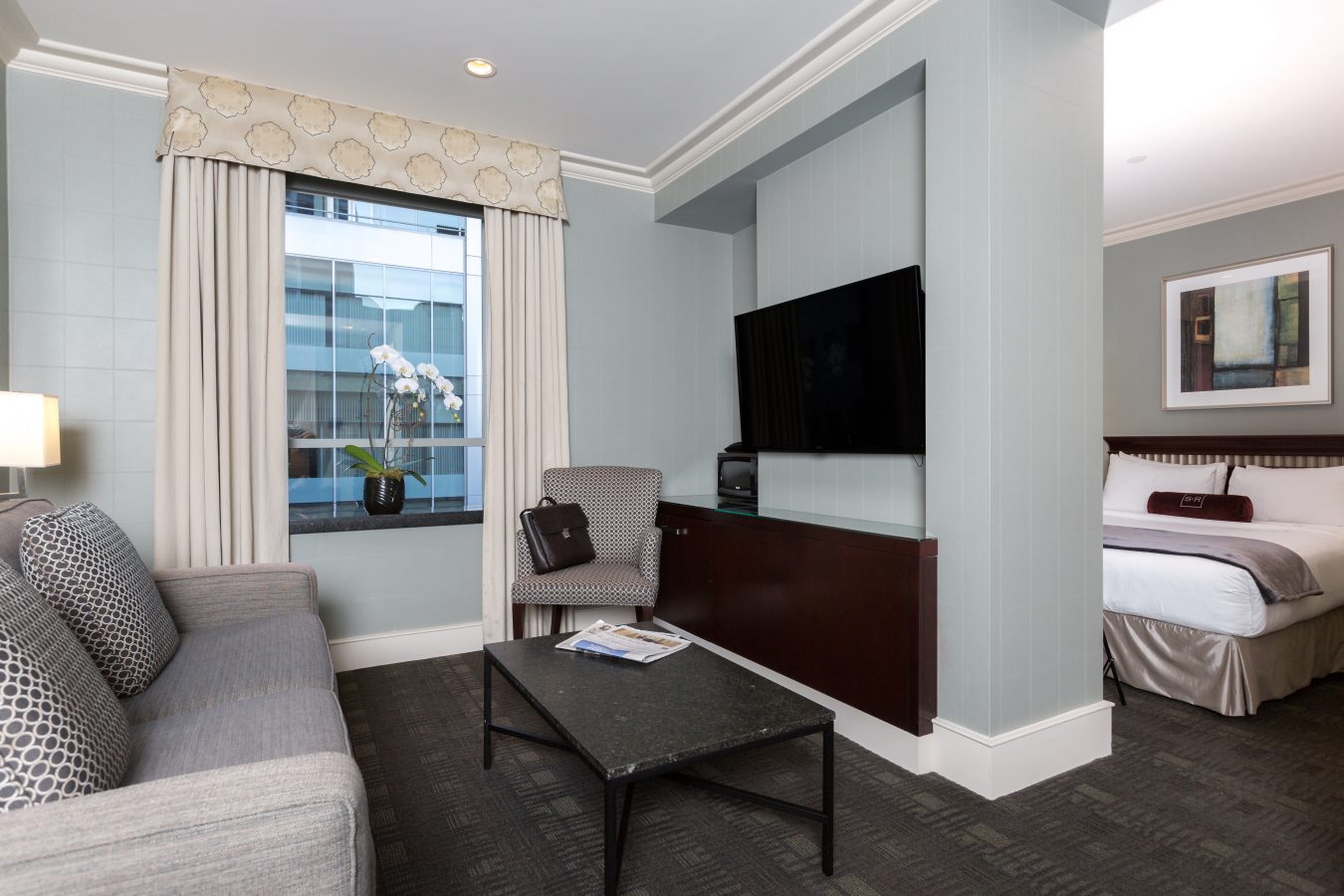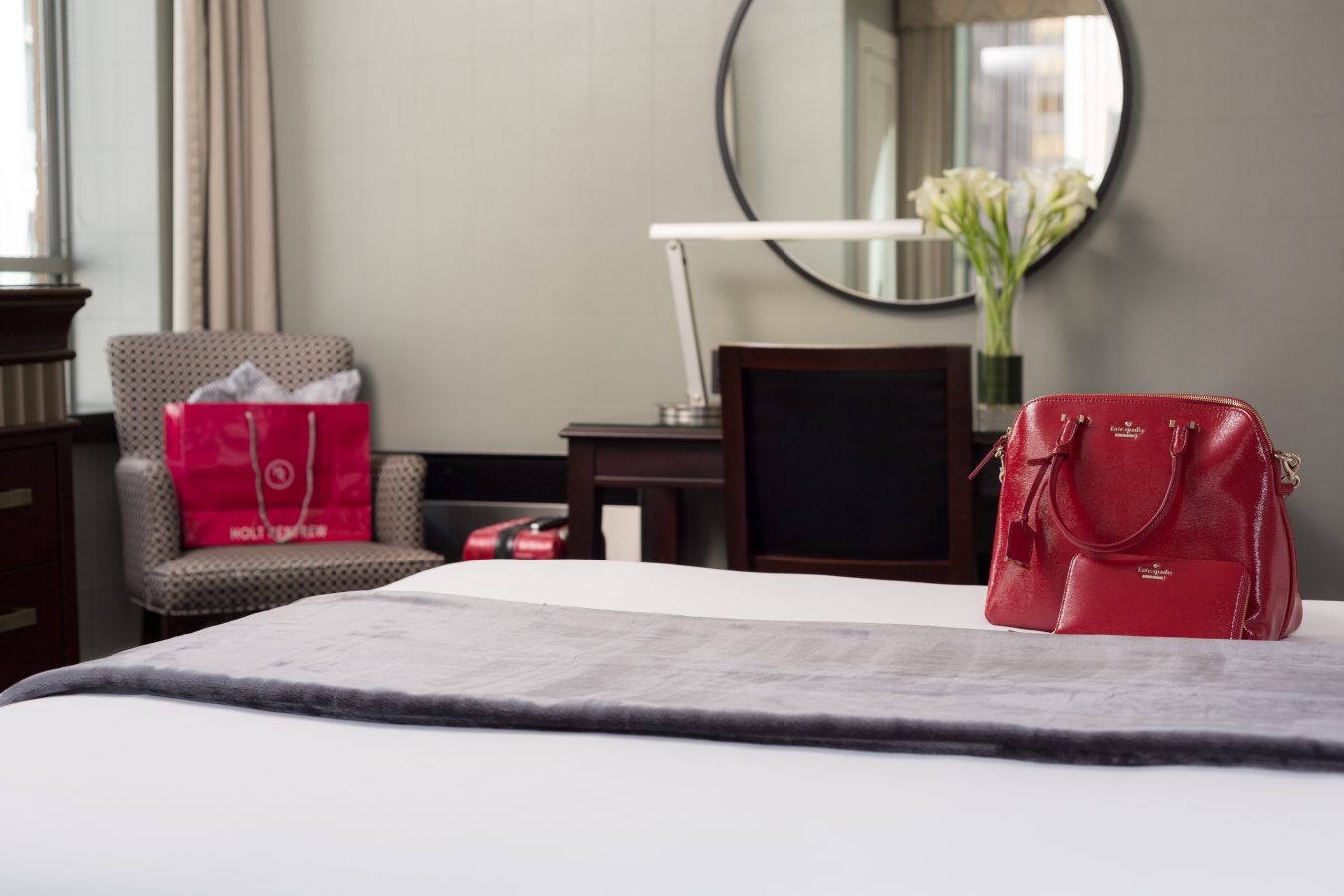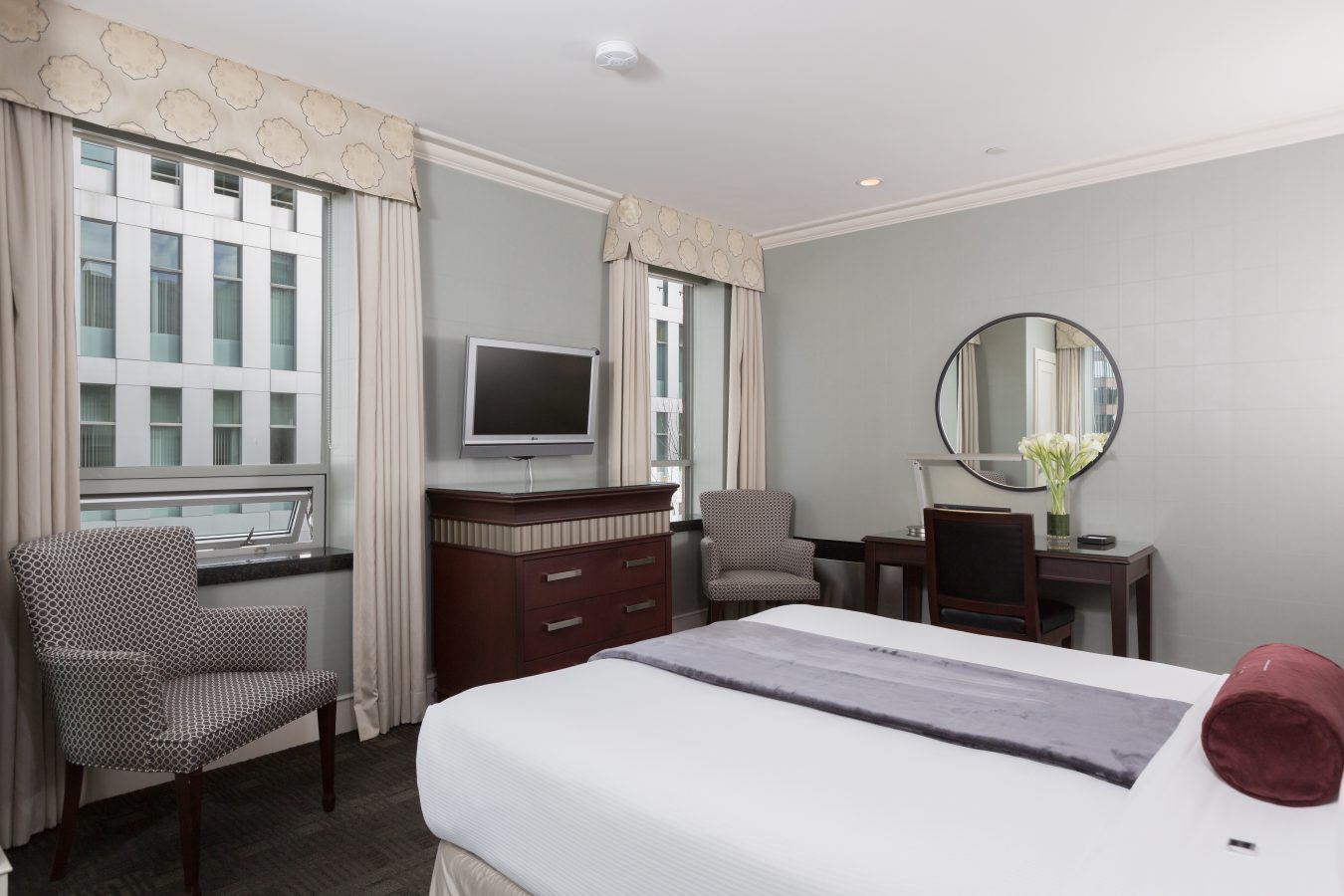It’s a rough winter’s day, and my cold toes are delighted to feel the warmth of my room’s heated floors in the St. Regis Hotel Vancouver. As I cozy up in my bathrobe after taking a hot shower with some citrus L’Occitane products, I grab the decadent milk chocolate square from my pillow and sprawl across the plush couch. With the sound of the television’s crackling fire filling the room, I doze off, finding comfort in an afternoon of no plans in one of Vancouver’s oldest hotels.
The St. Regis heritage building is an icon for style, comfort, and entertainment. Its red neon sign on the corner of Seymour and Dunsmuir is a landmark, and the five-storey Edwardian structure can be seen from blocks away. It’s a destination that general manager Jeremy Roncoroni explains was “the place to be” when it first opened in 1913.
This boutique hotel was built in 1911 (it has no relation to the St. Regis luxury hotel chain) when Vancouver was in its golden era; the frontier town was developing into a metropolis city, with the likes of businessmen and tourists flooding in to see the sights and sounds of a burgeoning downtown. The building was designed by Canadian architect W.T. Whiteway, originally from England; some of his work today can be found in Nova Scotia, and in the States at Port Townsend in Washington. His work in Vancouver includes the World Building (now referred to as Sun Tower), which for some time was the tallest in the British Empire.
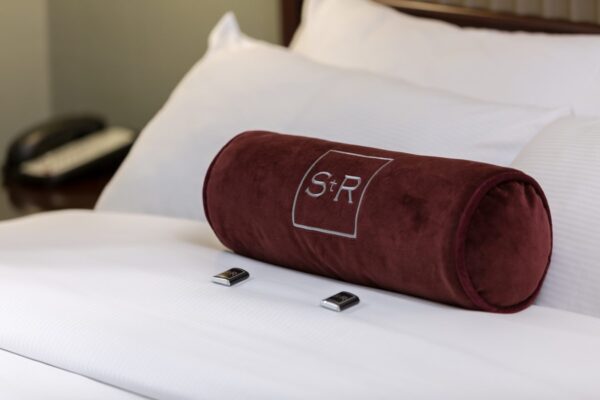
Alongside one of Canada’s top builders, F.J. Ryan (known for building the Harrison Hot Springs Resort and the Marine Building), Whiteway created the St. Regis Hotel. It was owned by a Russian immigrant family, who envisioned an apartment-style property with a restaurant and entertainment on the lower floors. It would cost $100,000 to build, and they believed the location would be a great investment, as the Hudson’s Bay Company flagship had just opened down the street.
The hotel was an immediate hit. Many businessmen arrived for its entertainment—there were “evening” dancers in the basement for a time—enjoying cocktails at the St. Regis Bar and Grill. Though the St. Regis suffered during the Great Depression, when the Second World War broke out in 1939, the lumber industry took off. The hotel would then begin to attract a different clientele: those interested in sitting back after the workday with a pint of beer.
Since the 1940s, the St. Regis has seen its fair share of esteemed athletes visiting the premises, including the New York Ranger coach Muzz Patrick and NHL hockey player Maurice Richard. Into the 1940s, the hotel was purchased by Vancouver sports entrepreneur and businessman Coleman Hall. Hall was an athlete himself; he had originally tried his hand at a professional baseball career in California before going on to run the St. Regis for many years. He was an avid follower of professional hockey—so much so that he created the hotel’s very own hockey team, the Vancouver St. Regis, during the Second World War. Playing between 1942 and 1944, the team competed in the Pacific Coast Hockey League, giving ice time to King Kwong, who would go on to be the first Asian-Canadian to ever play in the NHL, and eventual Stanley Cup winner Cyclone Taylor.
Hall would go on to be the first owner of the Canucks. He and business partner Paul Thompson established the franchise at the Forum, where the team competed in the West Coast Hockey League before going pro in the Western Hockey League. Hall can be thanked for the beloved Canucks moniker, too, which was inspired by his friend Art Nevison, who suggested he name the team after the wartime comic Johnny Canuck.
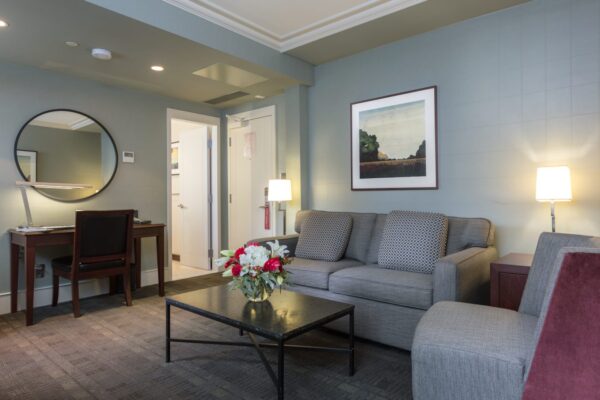
In the 1960s and 1970s, the downtown neighbourhood near the St. Regis was on the decline, much of this affecting the hotel. But in the early 2000s, the Macdonald family purchased the St. Regis, with their eyes set on re-sparking its golden years and re-branding it into a boutique New York-style property. “We re-opened in November of 2008 after an $11-million renovation,” says Roncoroni, describing that today, the exceptional service of his staff members, as well the exclusion of hidden costs and fees, encourages guests to return time and time again. “We don’t nickel and dime you for anything. That’s why we say: ‘Everything you deserve, and more than you expect.’”
Over the years, the St. Regis has housed many people of interest—the big names in sports, celebrity chefs—but also musical guests like Lady Gaga. “That was before she became who she is today,” recalls Roncoroni. “The younger ones knew who she was. We had a line-up of TV stations and radio stations that wanted to talk to her.” In 2000, the current breakfast lounge was also home to the stand-up comedy club Jesters, which was as popular amongst the locals as it was with tourists.
Its location in the city, and its connection to Gotham Steakhouse—accessed via a grand mahogany foyer—are big draws for visitors. “I think that our location is stellar,” says Roncoroni. “From here you can walk to basically anywhere in the downtown area; you’re a block away from some of the world’s best shopping.”
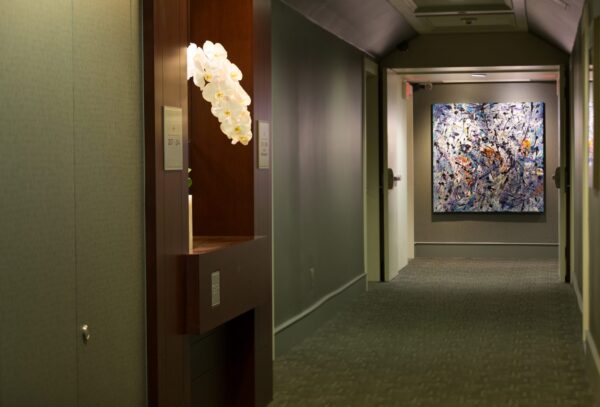
In 1999, Starwood Hotels & Resorts (a subsidiary of Marriott International and owner of the opulent St. Regis chain) sued the St. Regis Vancouver for the rights to the name. But the Vancouver property won the case, which is why we’ll probably never see the other kind of St. Regis in the city.
And so, this historic property endures. For Roncoroni, it’s the hotel’s adaptability that has allowed it to flourish over the past 104 years. “The owner allows us to renovate every room, every year. As we speak, we are in the middle of renovating the fourth and fifth floors,” he says. “This year we’ve already done the first, second, and third floors. I’ve never managed a hotel where the owner allows you to do this every year. By March, the hotel is brand new and ready to go for another season.”

